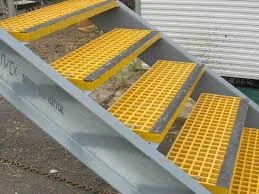
-
 Afrikaans
Afrikaans -
 Albanian
Albanian -
 Amharic
Amharic -
 Arabic
Arabic -
 Armenian
Armenian -
 Azerbaijani
Azerbaijani -
 Basque
Basque -
 Belarusian
Belarusian -
 Bengali
Bengali -
 Bosnian
Bosnian -
 Bulgarian
Bulgarian -
 Catalan
Catalan -
 Cebuano
Cebuano -
 China
China -
 China (Taiwan)
China (Taiwan) -
 Corsican
Corsican -
 Croatian
Croatian -
 Czech
Czech -
 Danish
Danish -
 Dutch
Dutch -
 English
English -
 Esperanto
Esperanto -
 Estonian
Estonian -
 Finnish
Finnish -
 French
French -
 Frisian
Frisian -
 Galician
Galician -
 Georgian
Georgian -
 German
German -
 Greek
Greek -
 Gujarati
Gujarati -
 Haitian Creole
Haitian Creole -
 hausa
hausa -
 hawaiian
hawaiian -
 Hebrew
Hebrew -
 Hindi
Hindi -
 Miao
Miao -
 Hungarian
Hungarian -
 Icelandic
Icelandic -
 igbo
igbo -
 Indonesian
Indonesian -
 irish
irish -
 Italian
Italian -
 Japanese
Japanese -
 Javanese
Javanese -
 Kannada
Kannada -
 kazakh
kazakh -
 Khmer
Khmer -
 Rwandese
Rwandese -
 Korean
Korean -
 Kurdish
Kurdish -
 Kyrgyz
Kyrgyz -
 Lao
Lao -
 Latin
Latin -
 Latvian
Latvian -
 Lithuanian
Lithuanian -
 Luxembourgish
Luxembourgish -
 Macedonian
Macedonian -
 Malgashi
Malgashi -
 Malay
Malay -
 Malayalam
Malayalam -
 Maltese
Maltese -
 Maori
Maori -
 Marathi
Marathi -
 Mongolian
Mongolian -
 Myanmar
Myanmar -
 Nepali
Nepali -
 Norwegian
Norwegian -
 Norwegian
Norwegian -
 Occitan
Occitan -
 Pashto
Pashto -
 Persian
Persian -
 Polish
Polish -
 Portuguese
Portuguese -
 Punjabi
Punjabi -
 Romanian
Romanian -
 Russian
Russian -
 Samoan
Samoan -
 Scottish Gaelic
Scottish Gaelic -
 Serbian
Serbian -
 Sesotho
Sesotho -
 Shona
Shona -
 Sindhi
Sindhi -
 Sinhala
Sinhala -
 Slovak
Slovak -
 Slovenian
Slovenian -
 Somali
Somali -
 Spanish
Spanish -
 Sundanese
Sundanese -
 Swahili
Swahili -
 Swedish
Swedish -
 Tagalog
Tagalog -
 Tajik
Tajik -
 Tamil
Tamil -
 Tatar
Tatar -
 Telugu
Telugu -
 Thai
Thai -
 Turkish
Turkish -
 Turkmen
Turkmen -
 Ukrainian
Ukrainian -
 Urdu
Urdu -
 Uighur
Uighur -
 Uzbek
Uzbek -
 Vietnamese
Vietnamese -
 Welsh
Welsh -
 Bantu
Bantu -
 Yiddish
Yiddish -
 Yoruba
Yoruba -
 Zulu
Zulu
Durable and Lightweight Fiberglass Stacks for Efficient Industrial Applications
The Advantages and Applications of Fiberglass Stacks
In recent years, the use of fiberglass in various industrial applications has surged, and one of the notable innovations stemming from this material is the fiberglass stack. Fiberglass stacks have emerged as essential components across diverse sectors, particularly in the environmental and industrial realms. Their lightweight nature, corrosion resistance, and durability make them a preferred choice for many applications, distinguishing them from traditional materials like metal or concrete.
What is a Fiberglass Stack?
Fiberglass stacks are vertical structures used predominantly to discharge gases or emissions into the atmosphere. They serve a critical role in industrial processes, where they help mitigate the release of pollutants and ensure compliance with environmental regulations. Constructed from fiberglass-reinforced plastic (FRP), these stacks are engineered to withstand harsh conditions, including high temperatures and corrosive environments.
Key Advantages of Fiberglass Stacks
1. Corrosion Resistance One of the primary advantages of fiberglass stacks is their impressive resistance to corrosion. Traditional metal stacks often corrode due to exposure to elements and chemicals, leading to costly maintenance and replacements. Fiberglass, on the other hand, does not rust or corrode, making it a more durable choice in environments where chemical exposure is common.
2. Lightweight The lightweight nature of fiberglass stacks simplifies transportation and installation. This characteristic allows for easier handling and reduces the structural support needed, which can lower overall project costs. The reduced weight does not compromise strength; fiberglass stacks can support harsh environmental conditions while remaining manageable.
3. Design Flexibility Fiberglass can be molded into various shapes and sizes, providing significant design flexibility. This ability to customize allows manufacturers to create stacks that fit specific site requirements or aesthetic preferences. Whether a facility needs a tall stack to achieve regulatory compliance or a uniquely designed one for visual reasons, fiberglass can accommodate these needs effectively.
fiberglass stack

4. Thermal Insulation Fiberglass materials inherently provide excellent thermal insulation. This property is invaluable in applications where temperature management is crucial, as it minimizes heat loss and improves overall efficiency. Reduced heat loss not only enhances performance but can also lead to energy savings which is an essential consideration in today’s cost-conscious industrial environment.
5. Maintenance-Free Unlike metal stacks, fiberglass stacks require very little maintenance. They can withstand extreme weather conditions without degrading, so facilities can operate more reliably without the concern of frequent repairs or replacements. This long lifespan translates to significant cost savings over time, making them a worthwhile investment.
Applications of Fiberglass Stacks
The applications for fiberglass stacks are as varied as their advantages. They are commonly used in
- Power Generation Plants For the safe discharge of flue gases, ensuring compliance with air quality standards. - Chemical Processing Facilities To ventilate toxic or corrosive emissions, where metal stacks would quickly fail. - Waste Treatment Plants For handling effluent gases, helping to control odorous emissions effectively. - Marine Applications On ships, where the lightweight and corrosion resistance of fiberglass are particularly beneficial.
Conclusion
In conclusion, fiberglass stacks represent a significant advancement in industrial emissions management. With their numerous advantages, they offer a practical and economical solution for facilities looking to enhance their environmental compliance while minimizing operational costs. As industries continuously seek innovative materials that can support sustainable practices, fiberglass stacks are poised to become even more prominent in the years to come. With ongoing developments in fiberglass technology, the future of industrial emission control looks promising, further reinforcing the pivotal role that these structures play in environmental stewardship.









